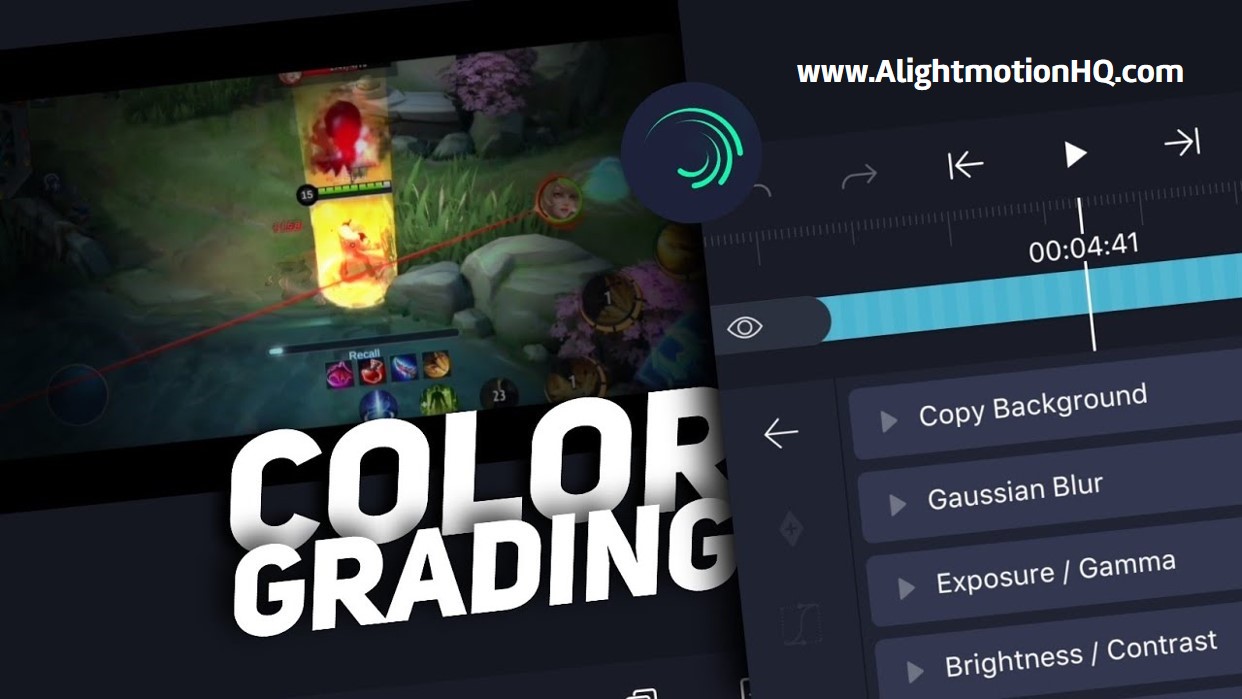Cinematic effects are what make anybody attracted to movies and shows you come across in everyday life. But those effects were originally performed only by the professionals. However, Alight Motion has presented these stunning effects to you now, all easy and possible to be carried out by anybody.

Cinematic effects play a key role in storytelling. Alight Motion enables you to perform color grading and transitions which can elevate your video projects to a cinematic level. These techniques are important to deliver the emotions and morals of a story to the audience. So if you create your video with Alight Motion, it is going to be heart touching to everyone who looks at it.
The Power of Color Grading
Color grading is a powerful way of delivering a story with the desired emotions embedded in it. It is an important tool to set the mood and atmosphere of your video.
Using warm colors can express happiness while the cool colors can show sadness and doubt. If you choose high-contrast color grading, it will be more dramatically visualized which will also be interesting.
But make sure you make your choice wisely. You can even change the color grading of the video from time to time along the timeline. This will present combined emotions in your video.
Color Grading Tools in Alight Motion

Alight Motion contains a number of essential tools for color grading:
Curves: This tool allows you to adjust highlights, shadows, and mid-tones for precise color control. You can make your outlines clearer by using Curves to sharpen them. Also, color controlling and differentiating is easier when you use curves for the designer as well as the viewer.
Color Wheels: Color wheels help to balance overall color temperature and saturation. This tool is highly adjustable. You can select parts of the picture and adjust the color properties separately in each of them.
Lookup Tables (LUTs): LUTs are pre-made color profiles for achieving specific cinematic looks. You may use these on your visual and see for yourself. Each profile could deliver different emotions in your story. Make sure you create layers and apply the LUTs to give a mix of feelings for the audience who visualize your design.
Applying Color Grading Techniques in Alight Motion
Given below is a step-by-step guide on color grading in Alight Motion:
- First, to set the overall color temperature, adjust the white balance of your visual. This is a good way to avoid glitches.
- Next, in order to get proper exposure, use balancing highlights and shadows. This will make your picture quality clearer while its important parts are highlighted.
- To get the desired cinematic look, use color wheels or LUTs on your clip. You also can add LUTs and then use color wheels in combination. This is like customizing the LUTs you have applied which will make your creation more unique.
- For more precise color adjustments, using fine-tuning with curves is recommended. This way you can ensure sharpness and clarity of the end product.
Mastering Transitions for Seamless Storytelling
Transitions play an important role in the flow of a video. Alight Motion presents you with a lot of transitions which you can apply on your clip. These help you in connecting different scenes and enhancing the smooth flow of your story. The nature of the transition as well as its speed and other customization options also contribute to present the story effectively.
There are different transition types available in Alight Motion:
- Dissolve – In this type, the old scene is gradually faded while the new scene appears fading in.
- Wipe – Wipe can be quicker than fading, generally. Here, an object or a shape that you can decide moves across the screen while it closes the old scene and opens the new scene. Wipe transitions can be very attractive and effective if properly used.
- Zoom – Zoom transitions are more dramatic. They zoom out the old scene and zoom in the new scene. The shape of the zooming can be determined by the editor himself.
- Cross Dissolve – This transition is in light with the audio of the clip. When the old scene fades out and the new scene fades in, so does the audio.
Effective Use of Transitions in Alight Motion
Make sure you choose the right transitions to match the style and mood of your video. Transitions can enhance the emotion as well disrupt it depending on how you use them. Some wise ways to use the transitions are:
- Wipes and zooms: to deliver energetic scenes.
- Dissolves or slow wipes: to present more gentle sectors of the video.
- Pops spins or zoom: to present funnier and energetic scenes.
You should also keep in mind that more than necessary could overwhelm your viewers. So you should rather use them sparingly.
Alight Motion also helps you create custom transitions with animation techniques for a unique touch.
Combining Color Grading and Transitions for Cinematic Impact
Color grading and transitions can work together to create a cohesive visual style for your video. If you place both of them ensuring that you deliver the same emotion or story, your end product will be very effective. It is advisable to practice using color grading and transitions in combination. You may also try them with different audios.
Different color grades and transitions can set specific moods and enhance storytelling. For example, the colors blue and green are known to be calm and suspenseful while red and orange could give a more energetic and happy feeling. If you use a dissolve transition to switch between the two color gradients, the conversion of calm to energetic gets highlighted.
Conclusion
Alight Motion presents you the cinematic effects of color grading and transitions which help enhance your videos. Both these techniques separately and in combination can be very effective in delivering the emotions of your story.
The users may experiment and explore the creative combinations of these tools by themselves for better outcomes